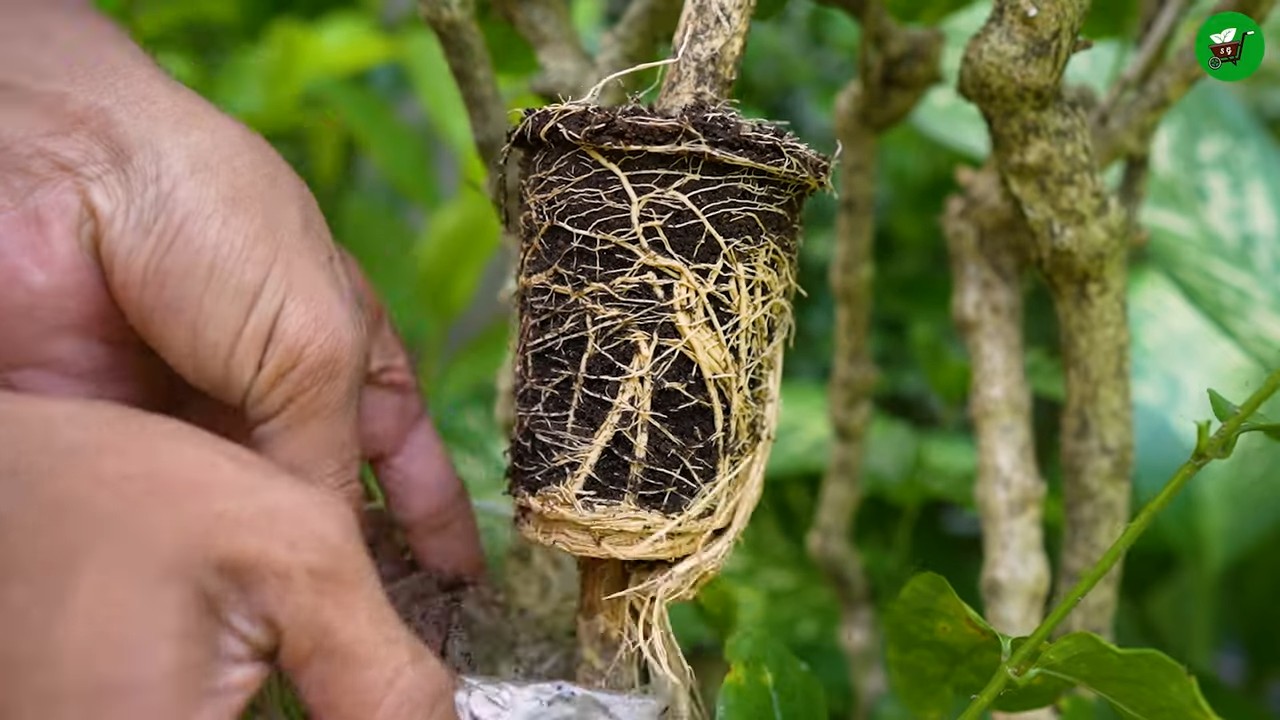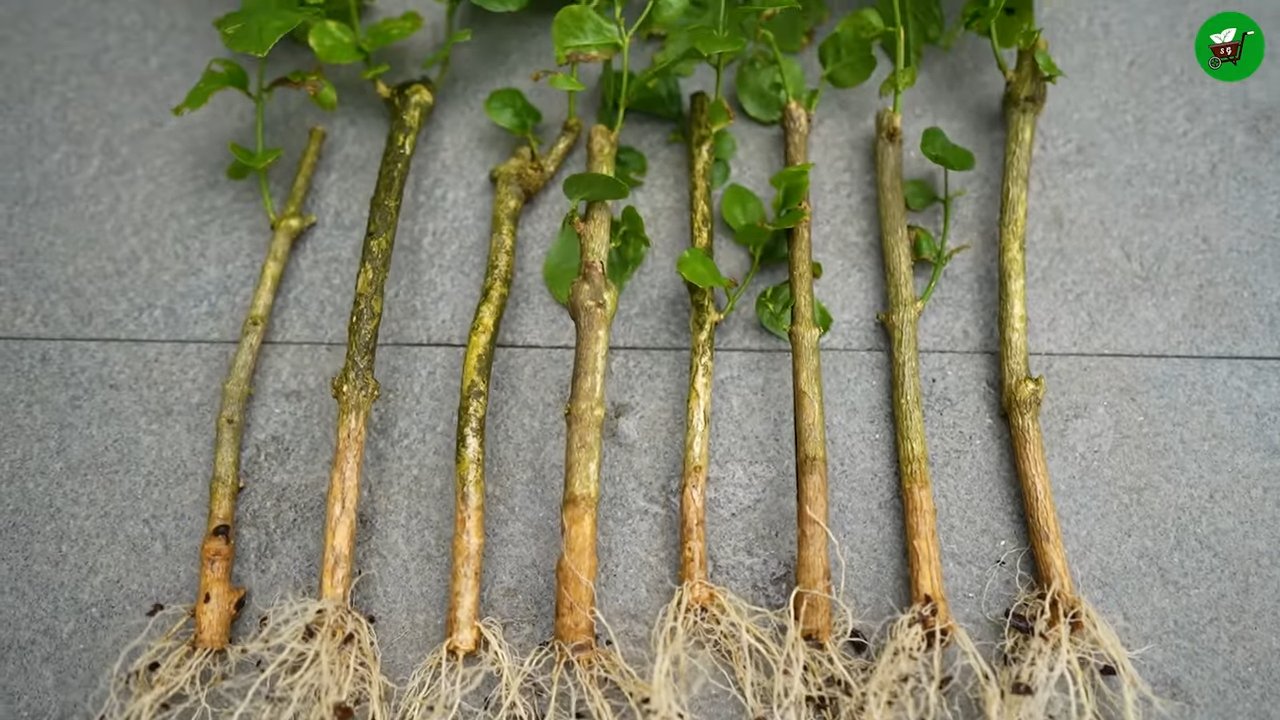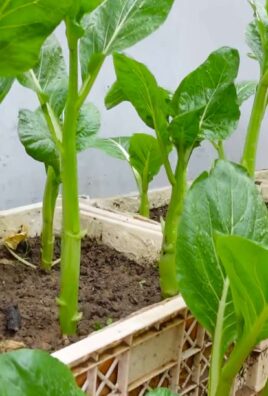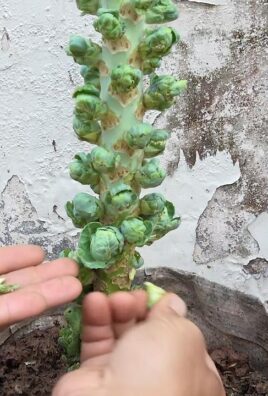Mogra Jasmine Propagation at Home: Ever dreamt of filling your garden with the intoxicating fragrance of Mogra Jasmine? Imagine stepping outside and being greeted by the sweet, heady scent that instantly transports you to a tranquil paradise. Well, stop dreaming and start doing! This isn’t just about growing a plant; it’s about cultivating a piece of your own personal oasis.
Jasmine, particularly Mogra, holds a special place in many cultures, often associated with love, purity, and good fortune. In India, it’s a staple in religious ceremonies, weddings, and even hair adornments. Its delicate beauty and captivating aroma have been cherished for centuries. But you don’t need to be a seasoned gardener to enjoy this fragrant beauty.
That’s where this DIY guide comes in! I know, the thought of propagating plants can seem daunting, but trust me, it’s easier than you think. With a few simple tricks and readily available materials, you can successfully multiply your Mogra Jasmine and share its beauty with friends and family. Why spend a fortune at the nursery when you can create new plants from your existing one? Plus, there’s something incredibly rewarding about nurturing a plant from a cutting to a thriving beauty. So, let’s dive into the world of Mogra Jasmine Propagation at Home and unlock the secrets to creating your own fragrant haven!

Mogra Jasmin Vermehrung zu Hause: Dein DIY-Leitfaden für duftende Blüten
Hallo Pflanzenfreunde! Ich freue mich riesig, euch heute zu zeigen, wie ihr eure eigenen Mogra Jasmin Pflanzen zu Hause vermehren könnt. Mogra Jasmin, auch bekannt als Arabischer Jasmin, ist nicht nur wunderschön, sondern verströmt auch einen betörenden Duft, der jeden Garten oder Balkon in eine duftende Oase verwandelt. Keine Sorge, es ist einfacher als du denkst! Mit dieser Schritt-für-Schritt-Anleitung zeige ich dir, wie du erfolgreich Stecklinge ziehst und bald deine eigenen Jasminblüten genießen kannst.
Was du für die Mogra Jasmin Vermehrung brauchst
Bevor wir loslegen, hier eine Liste der Dinge, die du benötigst:
* Ein gesundes Mogra Jasmin Mutterpflanze: Wähle eine Pflanze, die kräftig wächst und keine Anzeichen von Krankheiten oder Schädlingen aufweist.
* Eine scharfe, saubere Gartenschere oder ein Messer: Desinfiziere das Werkzeug, um die Übertragung von Krankheiten zu verhindern.
* Bewurzelungshormon (optional, aber empfohlen): Fördert die Wurzelbildung und erhöht die Erfolgsrate.
* Kleine Töpfe oder Anzuchtschalen: Mit guter Drainage.
* Anzuchterde oder eine Mischung aus Torfmoos und Perlit: Für eine gute Belüftung und Feuchtigkeitsspeicherung.
* Eine Sprühflasche mit Wasser: Um die Stecklinge feucht zu halten.
* Eine durchsichtige Plastiktüte oder ein Mini-Gewächshaus: Um eine hohe Luftfeuchtigkeit zu gewährleisten.
* Ein warmer, heller Standort ohne direkte Sonneneinstrahlung: Ideal für die Wurzelbildung.
Die beste Zeit für die Vermehrung
Der beste Zeitpunkt für die Mogra Jasmin Vermehrung ist im Frühjahr oder Sommer, wenn die Pflanze aktiv wächst. Die wärmeren Temperaturen und längeren Tage fördern die Wurzelbildung.
Schritt-für-Schritt-Anleitung zur Mogra Jasmin Vermehrung durch Stecklinge
Hier ist eine detaillierte Anleitung, wie du Mogra Jasmin durch Stecklinge vermehren kannst:
1. Auswahl und Vorbereitung der Stecklinge
1. Wähle gesunde Triebe: Suche nach jungen, gesunden Trieben an deiner Mutterpflanze. Diese sollten etwa 10-15 cm lang sein und mindestens 3-4 Blattknoten haben. Vermeide Triebe, die blühen oder Blütenknospen tragen, da die Pflanze ihre Energie in die Blütenbildung und nicht in die Wurzelbildung stecken würde.
2. Schneide die Stecklinge: Verwende deine scharfe, desinfizierte Gartenschere oder dein Messer, um die Stecklinge direkt unterhalb eines Blattknotens abzuschneiden. Ein sauberer Schnitt ist wichtig, um die Pflanze nicht zu verletzen und die Wurzelbildung zu fördern.
3. Entferne die unteren Blätter: Entferne die Blätter vom unteren Drittel des Stecklings. Dies verhindert, dass die Blätter im Substrat verrotten und reduziert die Verdunstung, wodurch der Steckling mehr Energie für die Wurzelbildung hat.
4. Optional: Bewurzelungshormon auftragen: Tauche das untere Ende des Stecklings in Bewurzelungshormon. Dies ist zwar nicht unbedingt notwendig, kann aber die Wurzelbildung beschleunigen und die Erfolgsrate erhöhen. Folge den Anweisungen auf der Verpackung des Bewurzelungshormons.
2. Einpflanzen der Stecklinge
1. Bereite die Töpfe vor: Fülle deine kleinen Töpfe oder Anzuchtschalen mit Anzuchterde oder einer Mischung aus Torfmoos und Perlit. Achte darauf, dass die Erde gut durchfeuchtet ist, aber nicht durchnässt.
2. Mache ein Loch: Verwende einen Bleistift oder einen Finger, um ein kleines Loch in die Erde zu machen, tief genug, um das untere Ende des Stecklings aufzunehmen.
3. Setze den Steckling ein: Setze den Steckling vorsichtig in das Loch und drücke die Erde leicht an, um ihn zu stabilisieren. Achte darauf, dass die Blätter nicht die Erde berühren.
4. Gieße die Stecklinge: Gieße die Stecklinge vorsichtig, um die Erde weiter zu befeuchten. Vermeide es, die Blätter zu benetzen, da dies die Bildung von Pilzkrankheiten fördern kann.
3. Schaffung einer feuchten Umgebung
1. Bedecke die Stecklinge: Stülpe eine durchsichtige Plastiktüte oder ein Mini-Gewächshaus über die Töpfe, um eine hohe Luftfeuchtigkeit zu gewährleisten. Dies hilft den Stecklingen, Feuchtigkeit zu speichern und verhindert, dass sie austrocknen.
2. Belüfte regelmäßig: Öffne die Plastiktüte oder das Mini-Gewächshaus einmal täglich für etwa 15-20 Minuten, um die Luft zu zirkulieren und die Bildung von Schimmel zu verhindern.
3. Besprühe die Stecklinge: Besprühe die Stecklinge regelmäßig mit Wasser, um sie feucht zu halten. Achte darauf, dass die Erde nicht austrocknet.
4. Pflege der Stecklinge während der Wurzelbildung
1. Stelle die Stecklinge an einen warmen, hellen Ort: Stelle die Töpfe an einen warmen, hellen Ort ohne direkte Sonneneinstrahlung. Direkte Sonneneinstrahlung kann die Stecklinge verbrennen. Ein Fensterbrett mit indirektem Licht ist ideal.
2. Halte die Erde feucht: Überprüfe die Erde regelmäßig und gieße sie, wenn sie sich trocken anfühlt. Achte darauf, dass die Erde nicht durchnässt ist, da dies zu Wurzelfäule führen kann.
3. Sei geduldig: Die Wurzelbildung kann einige Wochen dauern. Hab Geduld und gib nicht auf! Du wirst wissen, dass die Stecklinge Wurzeln gebildet haben, wenn du neues Wachstum siehst.
5. Umtopfen der bewurzelten Stecklinge
1. Überprüfe die Wurzeln: Nach etwa 6-8 Wochen kannst du vorsichtig einen Steckling aus dem Topf nehmen, um zu überprüfen, ob er Wurzeln gebildet hat. Wenn du viele kleine, weiße Wurzeln siehst, ist der Steckling bereit zum Umtopfen.
2. Wähle einen größeren Topf: Wähle einen größeren Topf mit guter Drainage.
3. Verwende Blumenerde: Fülle den Topf mit hochwertiger Blumenerde.
4. Topfe den Steckling um: Setze den Steckling vorsichtig in den neuen Topf und fülle ihn mit Erde auf. Drücke die Erde leicht an.
5. Gieße die Pflanze: Gieße die Pflanze gründlich, um die Erde zu befeuchten.
Pflege deiner jungen Mogra Jasmin Pflanze
Nach dem Umtopfen ist es wichtig, deine junge Mogra Jasmin Pflanze richtig zu pflegen, damit sie gesund wächst und blüht.
* Standort: Stelle die Pflanze an einen sonnigen Standort mit mindestens 6 Stunden direkter Sonneneinstrahlung pro Tag.
* Gießen: Gieße die Pflanze regelmäßig, besonders während der Wachstumsperiode. Achte darauf, dass die Erde feucht, aber nicht durchnässt ist.
* Düngen: Dünge die Pflanze während der Wachstumsperiode alle 2-4 Wochen mit einem ausgewogenen Flüssigdünger.
* Beschneiden: Beschneide die Pflanze regelmäßig, um sie in Form zu halten und die Blütenbildung zu fördern. Entferne abgestorbene oder beschädigte Zweige.
* Überwintern: In kälteren Klimazonen solltest du die Pflanze im Winter ins Haus holen, da sie nicht frosthart ist. Stelle sie an einen hellen, kühlen Ort und gieße sie sparsam.
Häufige Probleme und Lösungen
Auch bei der Vermehrung und Pflege von Mogra Jasmin können Probleme auftreten. Hier sind einige häufige Probleme und wie du sie lösen kannst:
* Stecklinge wurzeln nicht: Stelle sicher, dass die Stecklinge gesund sind, du Bewurzelungshormon verwendet hast und die Luftfeuchtigkeit hoch genug ist.
* Stecklinge verrotten: Dies kann durch zu viel Feuchtigkeit oder schlechte Belüftung verursacht werden. Reduziere die Bewässerung und belüfte die Stecklinge regelmäßig.
* Schädlinge: Mogra Jasmin kann

Conclusion
So, there you have it! Mastering Mogra Jasmine propagation at home is not just a possibility; it’s an achievable and incredibly rewarding experience. We’ve walked through the steps, demystified the process, and armed you with the knowledge to cultivate your own fragrant jasmine haven. Why is this DIY trick a must-try? Because it empowers you to expand your beloved Mogra Jasmine collection without breaking the bank, allows you to share the beauty of this plant with friends and family, and connects you more deeply with the natural world.
Imagine the satisfaction of nurturing a tiny cutting into a thriving, blooming jasmine plant, filling your home or garden with its intoxicating fragrance. This isn’t just about saving money; it’s about the joy of creation, the pride of accomplishment, and the connection to the earth. Plus, you’ll have a constant supply of jasmine flowers for teas, perfumes, or simply to enjoy their exquisite beauty.
But the benefits don’t stop there. Propagating your own Mogra Jasmine allows you to experiment with different growing conditions and techniques. Perhaps you want to try different rooting mediums, such as perlite or vermiculite, to see which yields the best results. Or maybe you want to experiment with different types of cuttings, such as softwood or hardwood cuttings, to extend your propagation season.
Variations and Suggestions:
* Air Layering: For a slightly different approach, consider air layering. This involves encouraging roots to form on a stem while it’s still attached to the parent plant. Simply wound a stem, apply rooting hormone, wrap it in moist sphagnum moss, and cover it with plastic wrap. Once roots develop, you can cut the stem below the roots and plant it.
* Water Propagation: While soil propagation is generally recommended for Mogra Jasmine, some gardeners have success with water propagation. Place cuttings in a jar of water, changing the water every few days. Once roots develop, carefully transplant the cutting into soil.
* Grafting: For more advanced gardeners, grafting can be a fun and rewarding technique. Grafting involves joining a cutting from your desired Mogra Jasmine variety onto the rootstock of a hardier jasmine species. This can improve the plant’s vigor and disease resistance.
* Experiment with Rooting Hormones: While not always necessary, rooting hormones can significantly increase your success rate, especially with more challenging cuttings. Experiment with different brands and concentrations to find what works best for you.
* Create a Mini Greenhouse: To maintain high humidity levels, consider creating a mini greenhouse for your cuttings. You can use a plastic bag, a clear storage container, or even a repurposed soda bottle. Just be sure to provide adequate ventilation to prevent fungal growth.
Don’t be afraid to experiment and adapt the techniques to suit your own environment and preferences. The key is to be patient, observant, and persistent. Remember that not every cutting will take root, but with practice and dedication, you’ll soon be propagating Mogra Jasmine like a pro.
We are confident that you can successfully propagate your own Mogra Jasmine at home. It’s a rewarding and cost-effective way to expand your collection and enjoy the beauty and fragrance of this beloved plant. So, grab your pruning shears, gather your supplies, and get ready to embark on a journey of horticultural discovery.
Now, we encourage you to try this DIY trick and share your experience with us! We’d love to hear about your successes, your challenges, and any tips or tricks you’ve discovered along the way. Share your photos and stories in the comments below, and let’s create a community of Mogra Jasmine enthusiasts! Let us know if this **Mogra Jasmine propagation** guide was helpful.
Frequently Asked Questions (FAQ)
1. What is the best time of year to propagate Mogra Jasmine?
The ideal time to propagate Mogra Jasmine is during the spring or early summer, when the plant is actively growing. This is when the cuttings will root most readily. However, you can also propagate in the late summer or early fall, although the success rate may be slightly lower. Avoid propagating during the winter months, when the plant is dormant.
2. What type of cuttings should I use for propagation?
The best type of cuttings to use for propagation are semi-hardwood cuttings. These are cuttings taken from stems that are partially mature, typically from the current season’s growth. The stems should be firm but not woody. Avoid using softwood cuttings (very new growth) or hardwood cuttings (old, woody growth), as they are less likely to root successfully. Cuttings should be about 4-6 inches long and have several leaves. Remove the lower leaves to prevent them from rotting in the soil.
3. What kind of soil should I use for propagating Mogra Jasmine?
A well-draining potting mix is essential for propagating Mogra Jasmine. A mixture of peat moss, perlite, and vermiculite is a good option. You can also use a commercial rooting mix. Avoid using garden soil, as it can be too heavy and may contain pathogens that can harm the cuttings. The soil should be moist but not soggy.
4. How often should I water the cuttings?
Water the cuttings regularly to keep the soil moist but not soggy. Check the soil moisture daily and water when the top inch feels dry to the touch. Avoid overwatering, as this can lead to root rot. It’s also helpful to mist the cuttings regularly to maintain high humidity levels.
5. How long does it take for Mogra Jasmine cuttings to root?
It typically takes 4-8 weeks for Mogra Jasmine cuttings to root. The exact time will depend on the environmental conditions, the type of cuttings used, and the rooting medium. You can check for root development by gently tugging on the cuttings. If they resist being pulled out of the soil, they have likely rooted.
6. What is the best location for propagating Mogra Jasmine cuttings?
The best location for propagating Mogra Jasmine cuttings is a warm, humid environment with indirect sunlight. Avoid placing the cuttings in direct sunlight, as this can scorch the leaves. A greenhouse or a shaded patio is an ideal location. You can also create a mini greenhouse by placing the cuttings in a plastic bag or a clear container.
7. Do I need to use rooting hormone to propagate Mogra Jasmine?
While not always necessary, rooting hormone can significantly increase your success rate, especially with more challenging cuttings. Rooting hormone contains auxins, which are plant hormones that promote root development. You can purchase rooting hormone in powder or liquid form. Follow the instructions on the product label for application.
8. What are some common problems with propagating Mogra Jasmine, and how can I fix them?
Some common problems with propagating Mogra Jasmine include:
* Root rot: This is caused by overwatering or poor drainage. To prevent root rot, use a well-draining potting mix and avoid overwatering.
* Fungal diseases: These can be caused by high humidity levels and poor ventilation. To prevent fungal diseases, provide adequate ventilation and avoid overcrowding the cuttings.
* Leaf drop: This can be caused by stress, such as sudden changes in temperature or humidity. To prevent leaf drop, provide stable environmental conditions and avoid moving the cuttings frequently.
* Lack of rooting: This can be caused by using the wrong type of cuttings, improper watering, or insufficient humidity. To improve your success rate, use semi-hardwood cuttings, water regularly, and maintain high humidity levels.
9. How do I care for newly rooted Mogra Jasmine cuttings?
Once the cuttings have rooted, gradually acclimate them to outdoor conditions before transplanting them into larger pots or into the garden. Start by placing them in a shaded location for a few hours each day, gradually increasing the amount of sunlight they receive. Water regularly and fertilize with a balanced fertilizer.
10. Can I propagate Mogra Jasmine from seeds?
While it is possible to propagate Mogra Jasmine from seeds, it is a much slower and less reliable method than propagation from cuttings. Seeds can take several months to germinate, and the resulting plants may not be true to type. Propagation from cuttings is the preferred method for most gardeners.





Leave a Comment